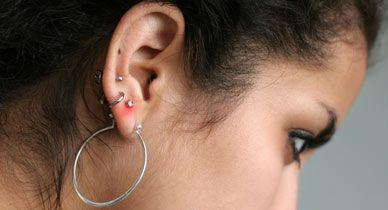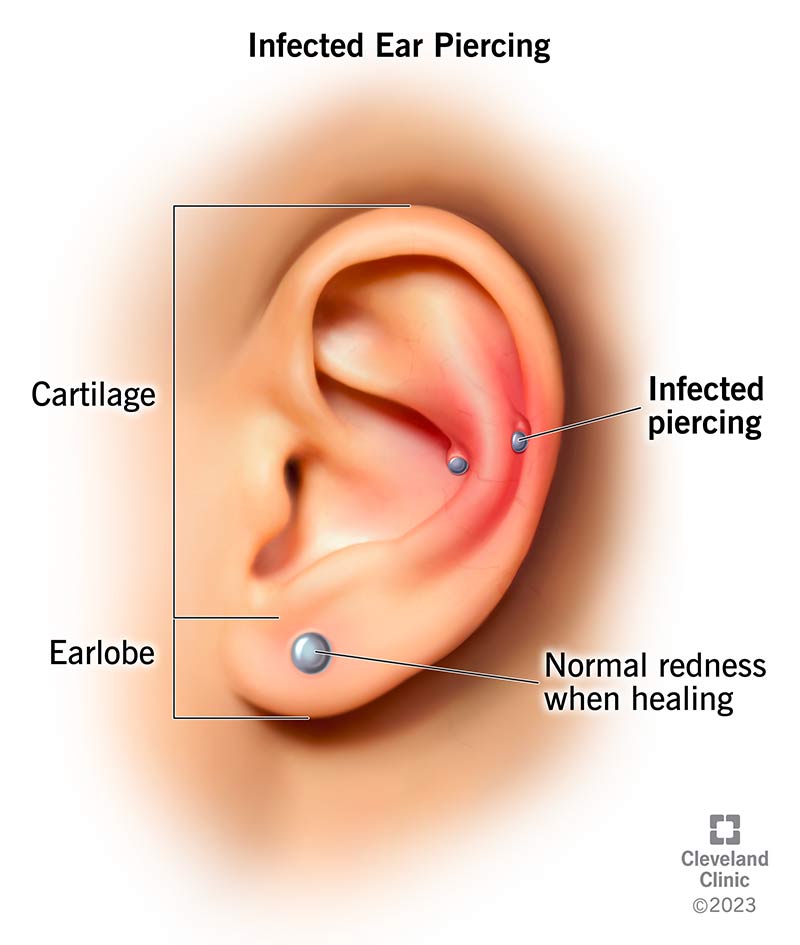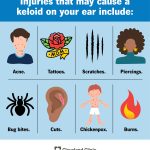Getting an ear piercing can be exciting. But sometimes, an ear piercing can get infected. This can happen to anyone. In this article, we will learn how to treat an infected ear piercing. We will also look at symptoms and when to see a doctor.
Understanding Ear Piercing Infections
An ear piercing infection occurs when bacteria get into the skin. This can happen if the piercing is not cared for properly. It can also occur if the piercing is too new or if dirty hands touch it. Knowing the signs of infection is important.
Symptoms of an Infected Ear Piercing
It is important to know the symptoms. Here are some common signs of an infected ear piercing:
- Redness around the piercing
- Swelling near the ear
- Pain or tenderness
- Pus or fluid coming out
- Warmth in the area
- Itching
If you notice any of these symptoms, it is important to act quickly.

Credit: www.healthline.com
Steps to Treat an Infected Ear Piercing
Here are simple steps to treat an infected ear piercing:
1. Wash Your Hands
Always wash your hands first. Use soap and water. This helps keep bacteria away.
2. Clean The Piercing
Use a saline solution to clean the area. You can make saline at home. Just mix 1/4 teaspoon of salt in 1 cup of warm water. Soak a clean cotton ball in this mixture. Gently clean around the piercing.
3. Avoid Touching The Piercing
Try not to touch the piercing with dirty hands. Avoid twisting or removing the earring. This can make the infection worse.
4. Apply An Antibiotic Ointment
After cleaning, you can apply an antibiotic ointment. Use a small amount. Make sure it is safe for piercings. This helps to fight bacteria and heal the area.
5. Keep The Area Dry
Keep the infected area dry. Moisture can make the infection worse. Avoid swimming or soaking in water.
6. Use Pain Relievers
If the piercing hurts, you can take over-the-counter pain relievers. Follow the instructions on the package. This can help with swelling and pain.
When to See a Doctor
Sometimes, at-home care is not enough. If symptoms do not improve, see a doctor. Here are some signs to look for:
- The redness spreads
- Severe pain or swelling
- Fever or chills
- Pus that is green or yellow
- Feeling very tired
A doctor can prescribe stronger antibiotics if needed. It is important to get help if you feel worried.
Special Cases: Cartilage Piercing Infections
Cartilage piercings are different from regular earlobe piercings. They can be more sensitive and take longer to heal. If a cartilage piercing gets infected, the same cleaning steps apply. But be extra gentle.
Cartilage infections can cause more pain than earlobe infections. If it does not get better after a few days, see a doctor.
Preventing Ear Piercing Infections
Prevention is the best way to avoid infections. Here are some tips:
- Get pierced by a professional.
- Use clean and safe jewelry.
- Follow aftercare instructions carefully.
- Avoid touching the earrings with dirty hands.
- Do not swim in pools or lakes until healed.
These steps can help keep your piercings healthy.

Credit: www.cjacksonlaw.com
Frequently Asked Questions
What Are The Signs Of An Infected Ear Piercing?
Redness, swelling, pain, and pus are common signs of infection.
How Can I Treat An Infected Ear Piercing At Home?
Clean the area with saline solution and avoid removing the earring.
Can I Use Alcohol On An Infected Ear Piercing?
Using alcohol can irritate the piercing and delay healing.
What Should I Avoid With An Infected Ear Piercing?
Avoid touching, changing earrings, or using harsh chemicals.
Conclusion
Infections can happen with ear piercings. It is important to treat them quickly. Follow the steps above to care for an infected ear piercing. If symptoms do not improve, see a doctor. Always remember to keep the area clean and dry. With proper care, most infections can heal well.




